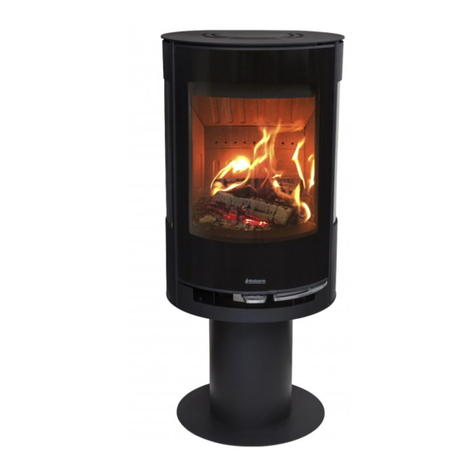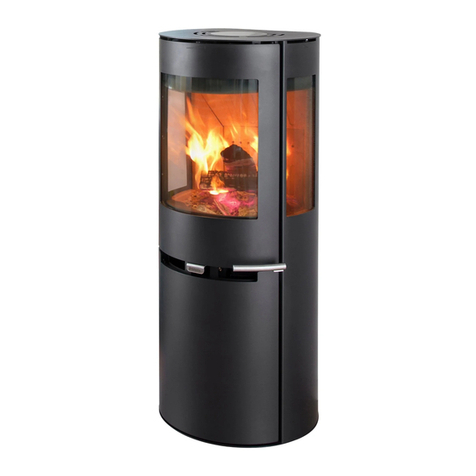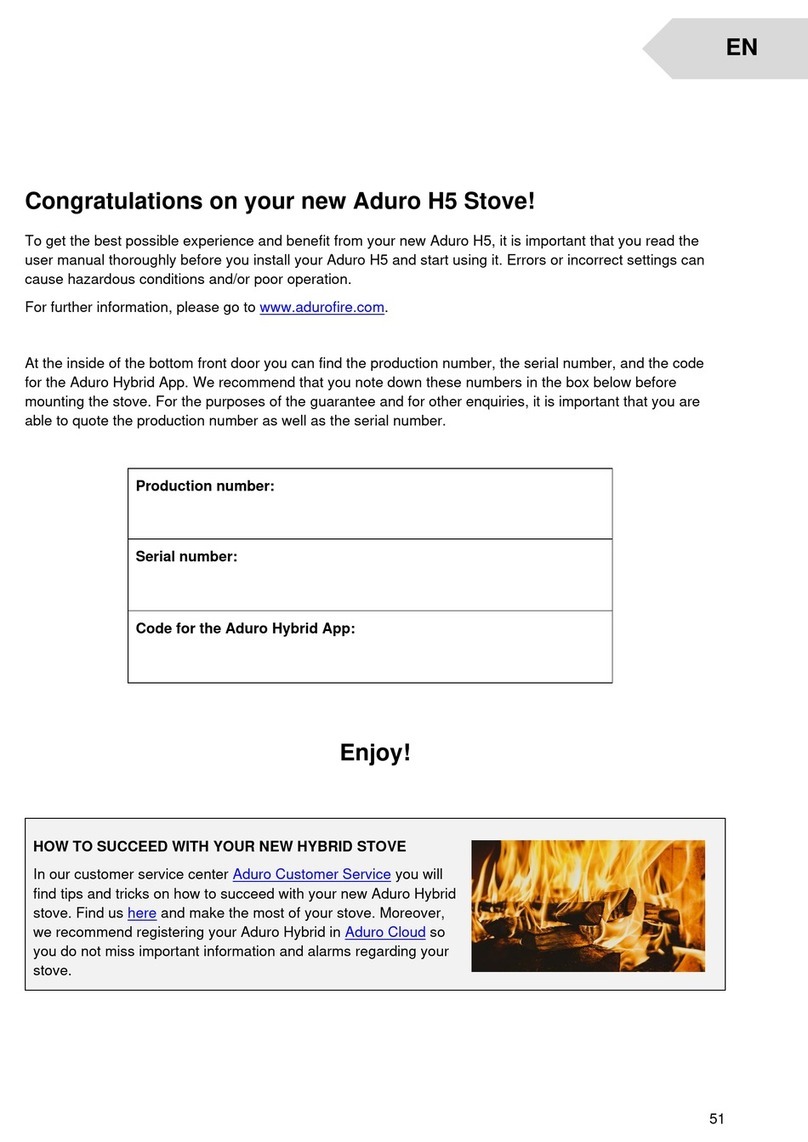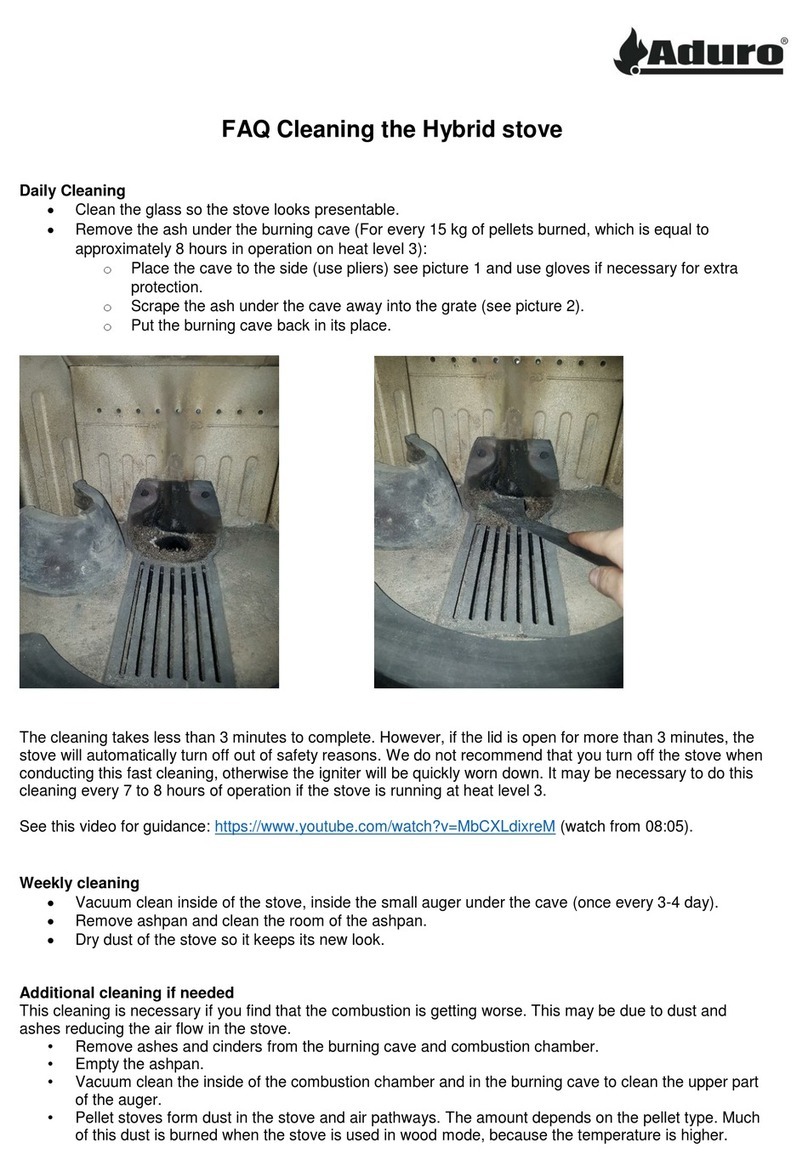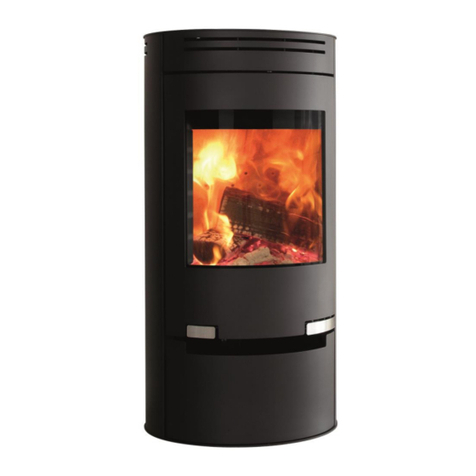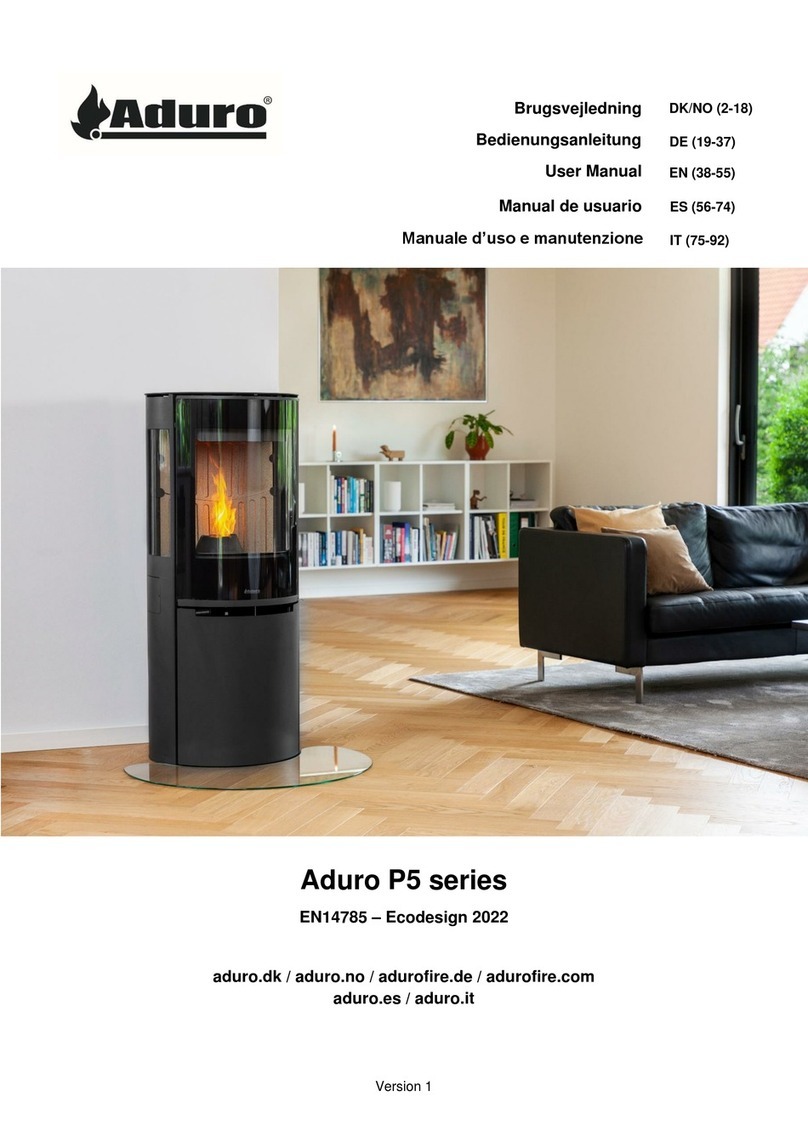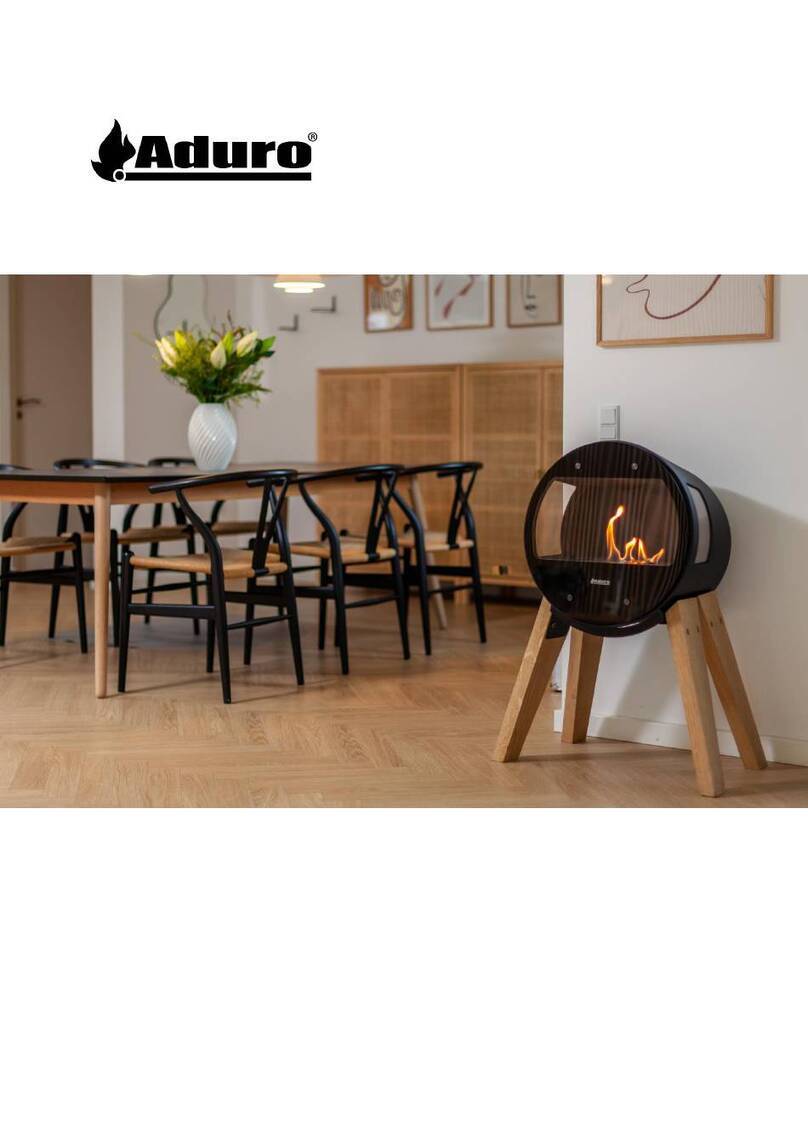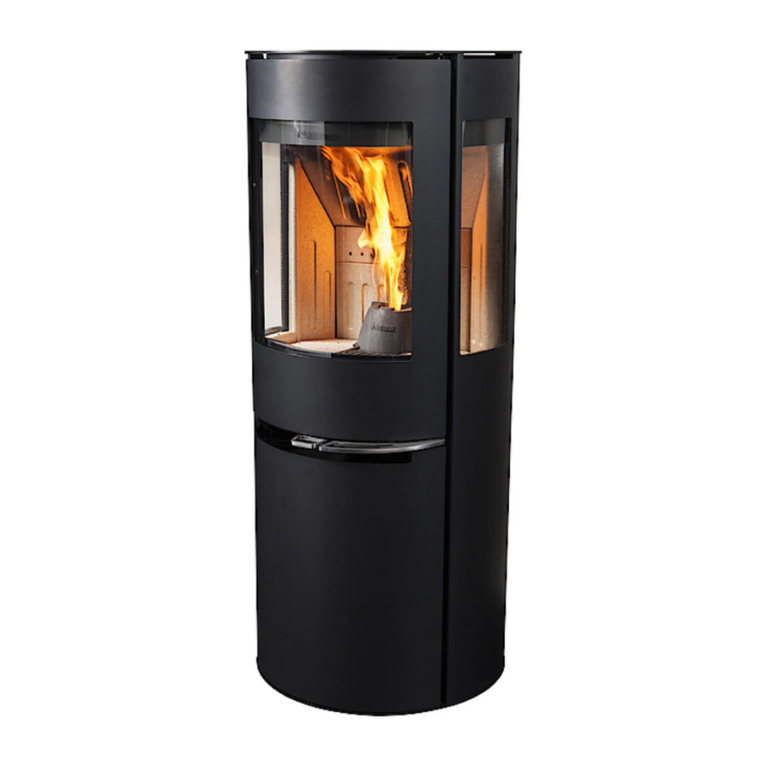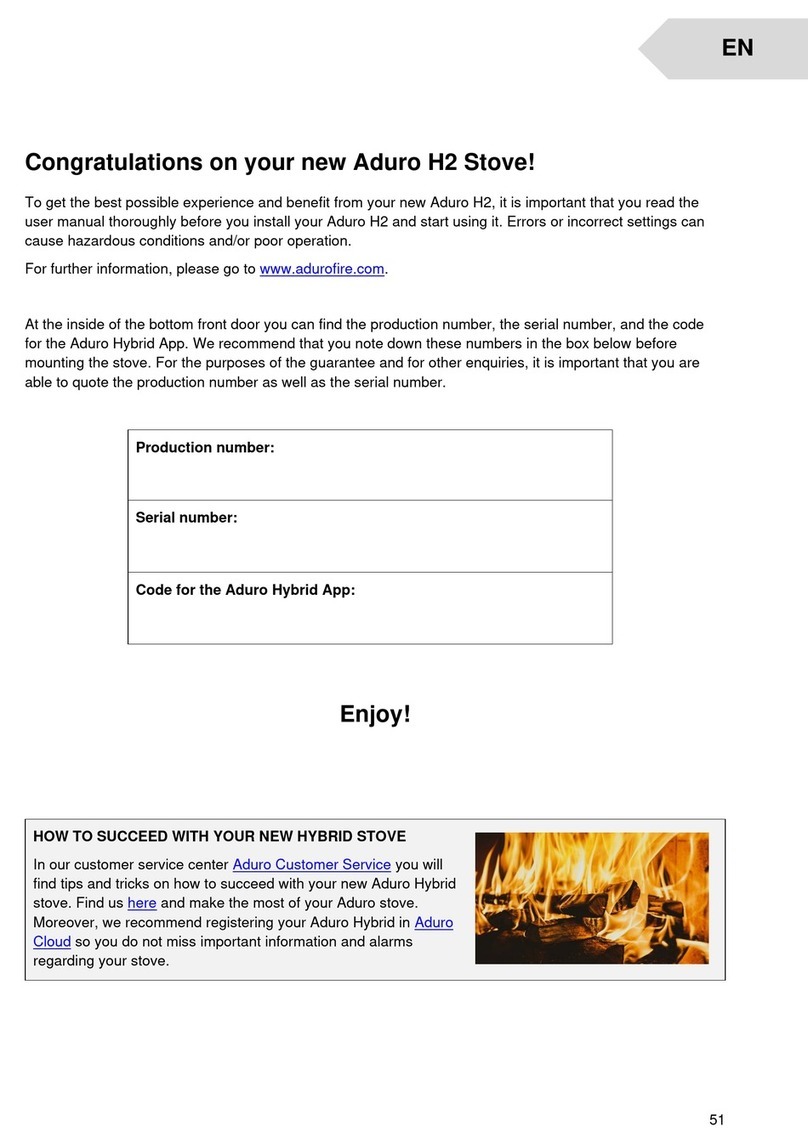• Never keep easily combustible fluids such as petrol in the vicinity of the wood burning stove – and
never use easily combustible fluids to light the fire in the wood burning stove
• Never empty the ash drawer when the wood burning stove is warm Embers may still be found in the
ash drawer for up to 24 hours after the fire has gone out Please wait to empty the ash drawer until
you are sure that there are no embers in the ash
• The door should be kept closed while the wood burning stove is in use While lighting the fire, the
door can stand ajar for the first few minutes
• In the event of a chimney fire: Close all the dampers on the wood burning stove and call the fire-
fighting service
4.2 Recommended fuels?
We recommend the use of split hardwood that has been stored outdoors under cover for at least 1 year
Wood that has been stored indoors has a tendency to become too dry and will burn too quickly The
wood should preferably be felled in the winter, when a lot of the moisture in the wood will have been
drawn down into the roots In order to achieve optimum combustion, the wood’s moisture level should not
exceed 18%, which roughly corresponds to storing the wood under cover outdoors for one year The
moisture level of the wood can be measured using a moisture meter or by applying washing up liquid to
one end of the log and blowing air in the other end If the wood is dry enough, soap bubbles will appear
The wood should be chopped into logs with a diameter of approx 10 cm and a log length of max 32 cm
Correct firing provides optimal heat output and maximum economy At the same time, correct firing
prevents environmental damage in the form of smoke and malodorous fumes and also reduces the risk of
chimney fires Well seasoned wood fuel is essential for correct use Make sure your fuel is kept dry If the
fuel is wet, a large proportion of the heat will be used to vaporize the water, and this energy will
disappear up the chimney It is clearly not only uneconomical to fire with wet fuel but also, as mentioned
above, increases the risk of producing soot, smoke and other environmentally damaging by-products
Burning varnished wood, impregnated wood, chipboard, paper and other waste is strictly forbidden Burning
these materials will damage the environment, the wood burning stove and your own health
4.3 Ho do I light a fire in the ood burning stove?
The fire lighting method is very important for starting combustion quickly and efficiently
1) Open the primary air intake/damper at the bottom of the door and open the secondary air intake at
the top of the door The primary damper is used at the start to get the fire going, while the secondary
air intake keeps the fire burning evenly The secondary air intake is open when the damper is
pushed all the way to the right and closed when the damper is pushed to the left
2) Place a log of wood crosswise in the combustion chamber and put 2 firelighters close to the log
Light the firelighters and quickly put a new log close to the firelighters and several small logs at an
angle above it Air must be able to reach the firelighters, but the logs should be touching to “warm”
each other
3) Keep the door approx 1 cm ajar, until the glass is too hot to touch Then close the door When there
are distinct, visible flames and the fire has taken hold, close the primary air intake/damper
Important: The control handle will get warm when the wood burning stove is being used Please use the
glove provided when you operate the wood burning stove
4.4 The first time a fire is lit
The first few times the wood burning stove is used, there may be some smoke and unpleasant odours from
the wood burning stove, which is fairly normal This is caused by the heat-resistant paint hardening Make
sure there is sufficient ventilation during this stage It is also important not to let the fire burn too fiercely the
first 2–3 times, so that the wood burning stove has time to expand slowly You should also be aware that the
stove may make clicking sounds as it heats up and cools down – rather like pouring boiling water into a sink
These are caused by the great differences in temperature to which the materials are being exposed
During the first firing, which should be carried out using approximately 1 kg of wood, the stoking door must
be left slightly open and must not be closed until the stove is cold This is to prevent the sealing rope sticking
to the stove


